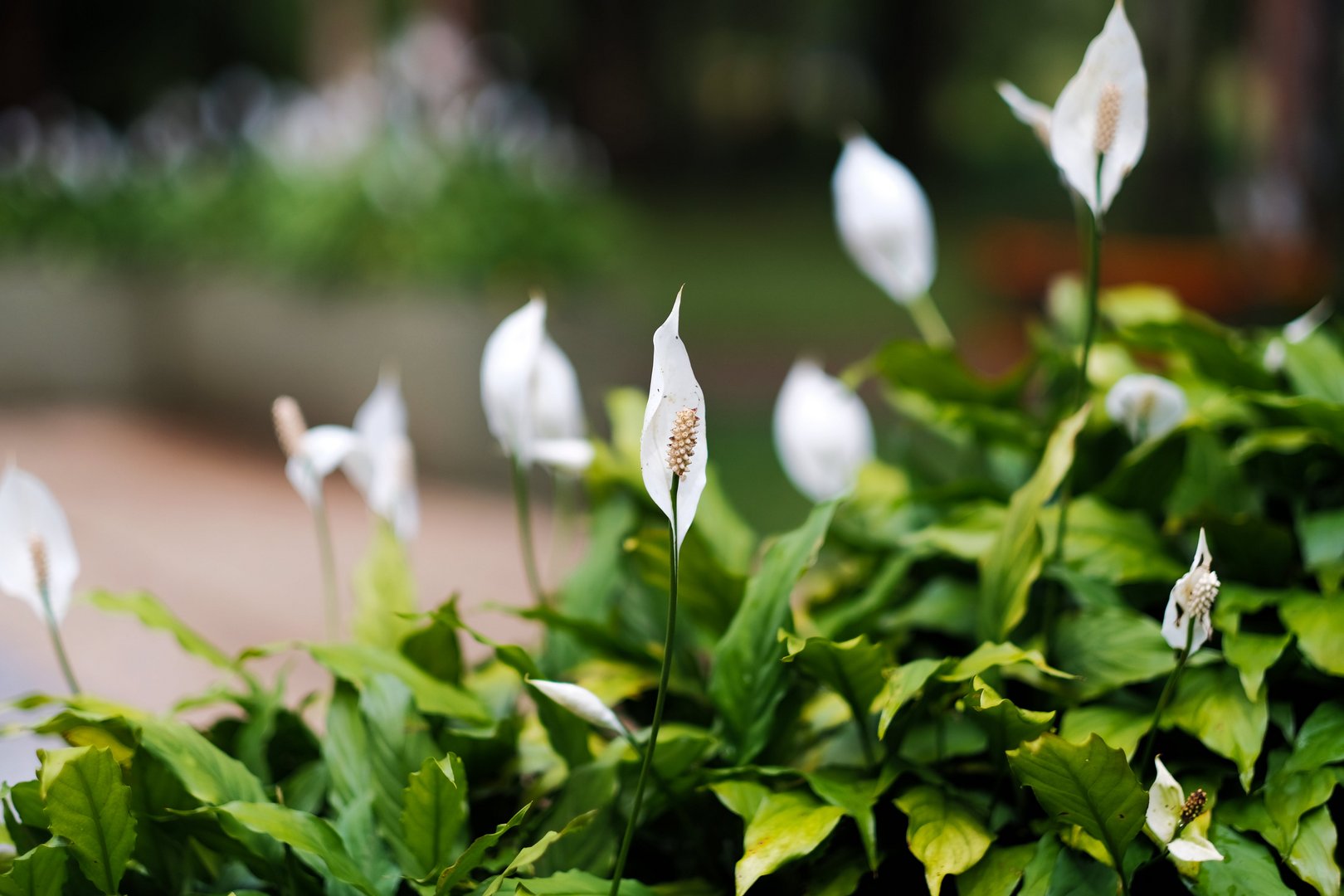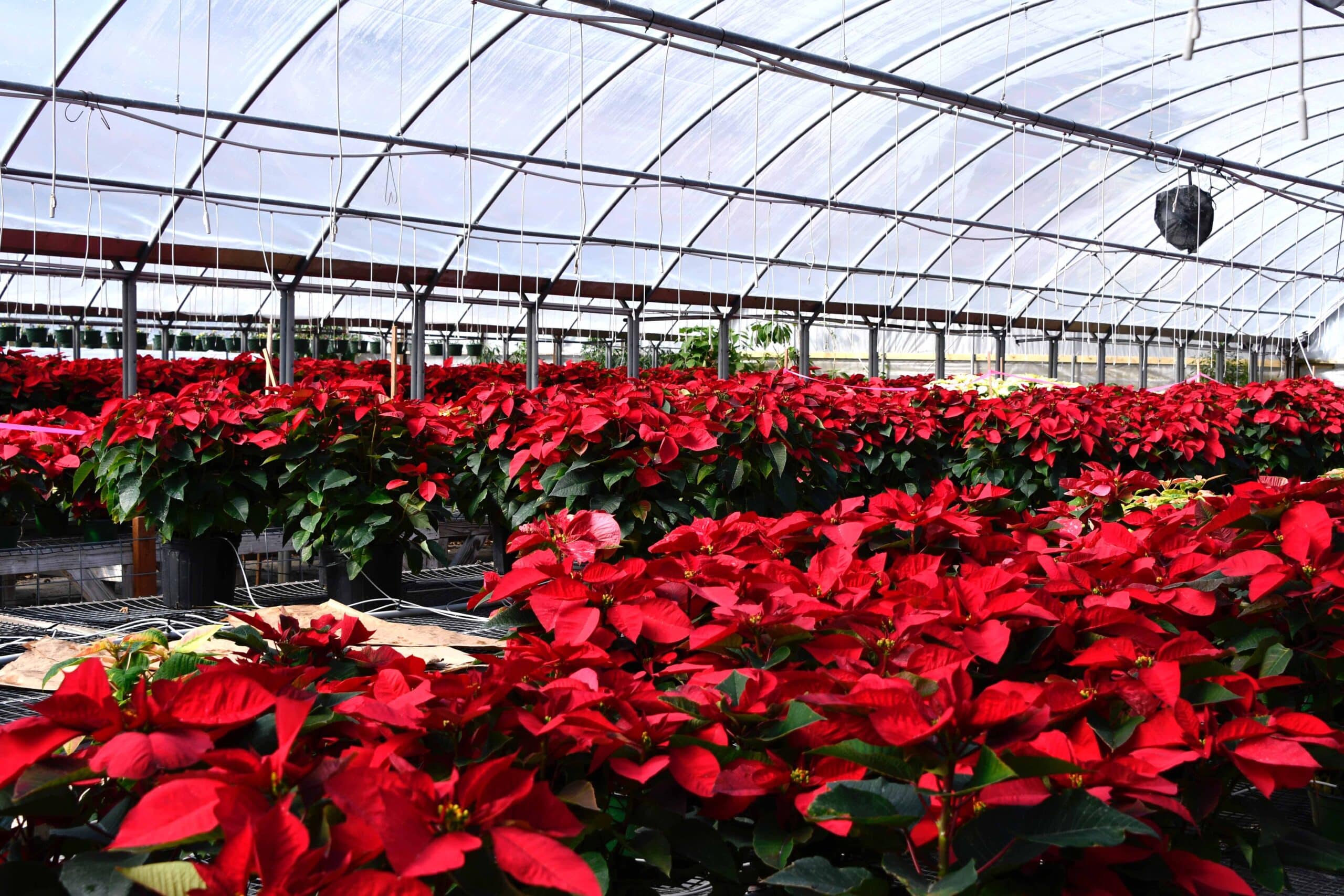It’s always a problem figuring out what to give gardeners for Christmas.
I know that I receive lots of gardening gloves, all very useful but not very imaginative.
As you look around the garden centres these days lots of ideas come to mind – water balls and fountains, as long as you can recycle the water; decorative plant pots; ornaments; wind chimes, which can be annoying in gales; statues, if you have space; and special tools for the handyman/gardener.
One website I looked at offered very prettily-decorated sets of hand forks and trowels for the veranda gardeners.
Pot plants are nice gifts to give and whilst orchids are very much in favour these days, they can be a bit tricky to keep going. Potted spathiphyllums are interesting plants and known as ‘The Peace Lily’, which is quite appropriate at this time. And whilst poinsettias are very commonplace now, there will not be a house without one in Cyprus, according to the growers (see Plant of the Month).
What to do in the garden in December
Fruit and nut trees need to be fed, as they haven’t been fed since May! With some trees feeding happens after leaf drop, like prunus for example (plums, nectarines, cherries and peaches) and if you didn’t manage this month, you can still do it once the festivities are over.
If you have pomegranates in your orchard, they do not need feeding after the first couple of years. Check that your citrus trees are not short of iron or zinc, which shows up as yellowing or mottled leaves or you may have to buy some iron and zinc chelate from a garden centre to deal with that problem.
The 20.10.10 fertiliser, or as near to that as you can get, will feed all the fruit trees. Use three mugsful for mature trees and one mugful for young trees. Remember that the feed should be spread around where the feeding roots are and not around the trunk of the trees. Halfway between the trunk of the tree and the edge of the tree canopy is best, as that is where they are.
Figs need a little pruning after leaf drop and should be fed with the same fertiliser as the other trees. Pecans tend to keep their leaves a little longer.
Mespilias are coming into flower now and they perfume the air with their lovely scents. Hopefully any bees will find them too and fertilise the flowers in order for you to have luscious fruits in the late springtime.
You may find that Jasminum mesnyi bushes are starting to flower too and the bright yellow, usually single flowers with sadly no perfume unlike their summer relatives, will brighten up your winter garden. They are best grown over an umbrella stand, as the long stems trail downwards and sometimes you might find that they have rooted in the soil beneath the plants – another plant for a spot somewhere else.
Strelitzias in coastal gardens may already be in flower, but at higher elevations like my garden, may take a little longer to open up. It’s a good idea to remove any shredded leaves and clean up any debris around the base area.
Succulents like Aeonium arboreum are starting to fill out again now that is cooler and in a few months time they will be topped with amazing heads of bright yellow flowers. Aloes, which also looked parched during the summer, are also putting on growth and before long their tall flower stems will be pushing upwards.
Weeds are still growing and with the likelihood of rain they are best removed before they set seeds. Have a look at your lawns and if necessary, take a fine tined rake over them to get out the rubbish that accumulates around the root area. This a regular chore with lawns and even with artificial lawns you may find weed seeds are growing in there that have been blown in on the wind and any drop of water or humidity will cause them to germinate.
Check roses that may have grown very tall and could be buffeted about in winter winds, which will loosen the roots. You can reduce the stems down by half, which should help. I know that in village gardens they seem to flower all winter long, but roses like other plants do need a rest period and this is a good time for that.
You may find ‘bare root’ roses on garden centre benches now and this is the right time to plant them as well. Remember to give them a good soak in a bucket of water before you plant them and cut back any straggly roots to give them the best chance of survival. Some slow-release fertiliser at the bottom of the planting hole certainly helps things along.
Whilst you are tending to the trees and shrubs, bulbs are sending up their foliage usually ahead of any flowers. One of the early flowerers, but with extremely floppy foliage, is Ornithogalum arabicum, commonly known as ‘The Star of Bethlehem’. The stunning flowers are rising from the heap of leaves and last for a long time. I have never seen the bulbs for sale though, so you may need to beg a few from friends.
Others won’t be far behind, in fact ‘Paper Whites’ may just beat them. I quite like the nana (meaning small) gladioli, which are also early flowerers and come in delightful pastel shades but my real favourite, which I grow in a pot, is Gladiolus tristis, with it’s a sultry evening perfume. Another bulb that you won’t find on the garden centre shelves!
Don’t forget your veggie patch at this time of year. Those plugs you planted earlier of Brussel sprouts, broccoli and cauliflower should be ready for Christmas dinner. I have grown potatoes from those that sprouted in my vegetable basket in years past, but have not tried to grow parsnips, a favourite in this house and mostly imported fresh from Holland. Crop your veggies when they are small and don’t let them grow too big or they won’t taste as sweet.
Plant of the Month – Poinsettias
As you may know poinsettias belong to the Euphorbia family and were originally found growing in Mexico, but unlike some of that family they don’t have prickly stems. I expect there will be few homes that don’t have one or two indoors at this time of year. I always advise not to buy from an outdoor stall as they can be ‘iffy’ plants and do not like changes of temperature at all.
So, once you get them home, carefully remove the outer cellophane wrapping and let the plant recover its shape. Choose a nice bright draught-free spot in the light but out of the sun.
There may of course be some leaf drop, so remember that they leak latex from the stem ends to which you to may be allergic. The Aztecs, who regarded this plant as a symbol of purity, used this latex to control fevers, but I suggest that you carefully wash it off your hands.
Watering can be a problem and many a poinsettia dies from over-watering. Here’s my advice. Feel the top of the soil and if it is at all dry, then some watering is necessary. The best way I have found is to hold the pot over a bowl or sink and let cool water drip gently through the pot. When it has stopped dripping from the bottom, then return the plant to its decorative pot.
Poinsettias are regarded as seasonal plants and rarely last past January and as a rule they drop their leaves and look bare for months. You may be lucky and keep them going for a while, but the problem is how to make the new leaves turn from green to red in time for Christmas. In nurseries, special lights help to do that.
Most of the plants for sale here have been raised in Holland and the plantlets are brought on in special greenhouses and shipped to other countries as well as Cyprus in the summertime, where they are nurtured until Christmas.
Before there were poinsettias on such a big scale as now, we used to decorate our homes with holly, mistletoe, ivy and hellebores (known as Christmas roses). I think that poinsettias have now taken over all these other plants as the traditional Christmas flower.









Click here to change your cookie preferences